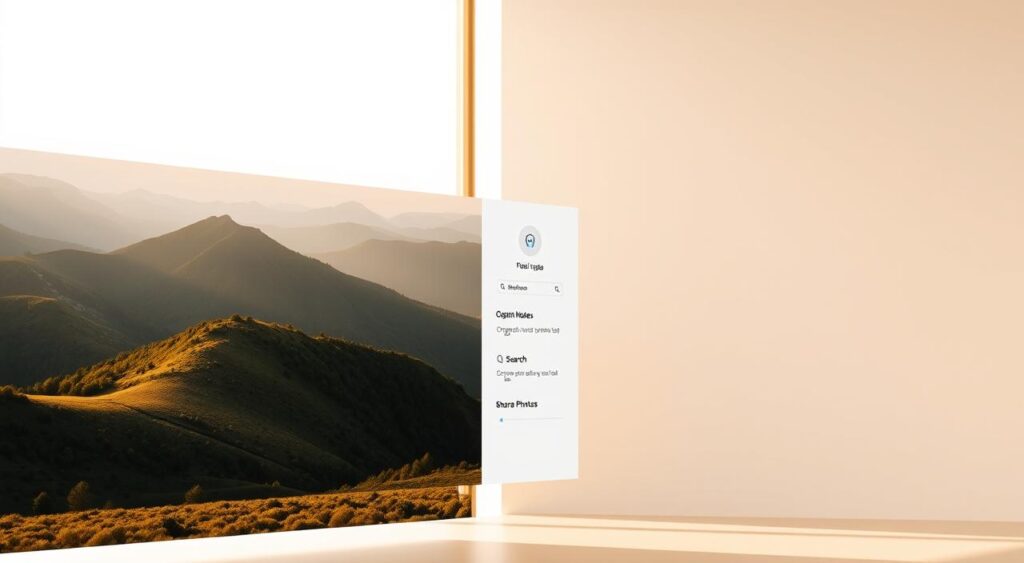I’ve been looking for a self-hosted photo management platform because I care about privacy. Cloud services like Google Photos were no longer good enough for me.
I wanted to host my photos myself, keeping them safe and private. After some digging, I found a fantastic open source alternative that I now use all the time.
This choice has solved my privacy worries and let me manage my photos freely. It’s been a huge improvement for me, and I’m eager to tell you about it.
Key Takeaways
- A self-hosted solution offers greater control over personal photos.
- Open source alternatives can be highly customizable.
- Moving away from cloud-based services enhances privacy.
- A good self-hosted platform can be just as user-friendly as cloud-based services.
- Flexibility in managing photos is a significant advantage.
Why I Decided to Move Away from Google Photos
I started to worry about my digital privacy when I used Google Photos. I felt uneasy about my photos and data being stored by someone else.
Privacy Concerns with Cloud Photo Services
My main reason for leaving was privacy. Google Photos stores your photos on their servers. This made me uncomfortable, as it felt like they had access to my personal moments.
I looked for a privacy-focused photo storage solution that would give me more control. It’s not just about keeping data safe from hackers. It’s also about who sees your data and how it’s used.
Storage Limitations and Pricing Changes
Google Photos’ storage limitations and pricing changes also played a role. They used to offer unlimited storage, but now you need a subscription for more space. This made me think about the cost of using cloud storage.
I wanted a cloud photo storage alternative that wouldn’t cost too much. I didn’t want to be stuck with unexpected fees.
The Need for Complete Control Over My Photos
I also wanted complete control over my photos. Google Photos is convenient, but it limits how you can manage your photos. I wanted to manage my photos my way, without being tied to Google’s features.
By managing my photos myself, I can keep my data private. It also lets me organize and access my photos in a way that’s just right for me.
What to Look for in a Self-Hosted Photo Management Solution

Looking for a Google Photos alternative? A good self-hosted photo management solution needs key features and technical skills. It’s important to think about several factors to find the right platform for you.
Essential Features for Google Photos Alternatives
A self-hosted photo management platform should have features that help you organize, search, and share photos easily. Look for:
- Robust photo organization and tagging capabilities
- Powerful search functionality
- Support for multiple file formats
- Mobile and web access options
- Backup and synchronization capabilities
These features are key for a smooth user experience. They make sure your photos are easy to find and manage.
Hardware and Technical Requirements
Before picking a self-hosted photo management solution, think about the hardware and technical requirements. This includes:
| Requirement | Description | Recommended Specification |
|---|---|---|
| Processor | A fast processor for handling photo processing and indexing tasks | Quad-core CPU |
| Memory | Adequate RAM for smooth performance | 8 GB or more |
| Storage | Ample storage for your photo collection | 1 TB or more |
Meeting these technical requirements ensures your solution runs smoothly and efficiently.
Ease of Setup and Maintenance
Another key factor is the ease of setup and maintenance. A good solution should be easy to install and configure. It should also require minimal ongoing maintenance. Look for solutions with:
- Simple installation processes
- Intuitive user interfaces
- Automated updates and backups
By considering these factors, you can find a self-hosted photo management solution that meets your needs and offers a seamless experience.
The Best Open Source Alternative to Google Photos for Self-Hosting: PhotoPrism

I found PhotoPrism to be the best open source alternative to Google Photos for self-hosting. It’s perfect for those who value privacy and control over their data. PhotoPrism’s decentralized approach to photo management really stood out to me.
What is PhotoPrism?
PhotoPrism is a decentralized photo management tool. It lets users store and organize their photos on their own servers. This makes it a great choice for those seeking a private and controlled photo management system.
The developers say PhotoPrism is a server-based app. It can run on a local machine or a cloud server. This flexibility is a big plus, allowing users to host their photos as they see fit.
Why I Chose PhotoPrism Over Other Options
I picked PhotoPrism for its strong features and ease of use. Its AI-powered tagging and facial recognition were key factors for me.
- Robust photo organization features
- AI-powered tagging and facial recognition
- Support for multiple file formats
PhotoPrism’s open source nature also appealed to me. It shows a commitment to transparency and community involvement.
How It Compares to Google Photos
Google Photos is powerful, but PhotoPrism has its own strengths. With PhotoPrism, I own my photos and manage them freely.
Unlike Google Photos, which uses cloud storage, PhotoPrism lets me store photos locally. This gives me more control and saves money in the long run.
Using PhotoPrism, I’m seeing its true power. It shows how open source solutions can offer great alternatives to mainstream services.
Key Features and Benefits of PhotoPrism
Switching to a self-hosted photo service, I found PhotoPrism to be a top choice. It’s a privacy-focused photo storage solution with many key features. Let’s explore what makes PhotoPrism stand out.
Powerful Photo Organization and Search
PhotoPrism shines with its photo organization and search. It uses advanced AI to help you find and sort your photos easily. This makes managing your photos a breeze.
AI-Powered Face Recognition
Its AI face recognition is incredibly accurate. It makes tagging people in your photos simple. This is a big help for those with lots of photos.
Location and Map Features
PhotoPrism also has location and map features. You can see your photos on a map and tag new ones. It’s great for those who love to travel.
Mobile and Web Access Options
PhotoPrism lets you access your photos from anywhere. You can use it on mobile devices or web browsers. This makes it easy to get to your photos whenever you need to.
Backup and Synchronization Capabilities
PhotoPrism keeps your photos safe and up-to-date. It backs up your photos and syncs them across all your devices. This ensures you always have access to your photos.
Performance on Indian Internet Connections
PhotoPrism works well even on India’s variable internet. It handles different network conditions well. This makes it a reliable choice for users in India.
Setting Up PhotoPrism on Your Own Server in India
I’ll show you how to set up PhotoPrism, a great cloud photo storage alternative, on your own server in India. You’ll need to pick the right hardware, install PhotoPrism via Docker, and understand the costs.
My Hardware Setup
I use a Raspberry Pi 4 with 4GB RAM for my PhotoPrism setup. It’s perfect for handling PhotoPrism’s needs and uses little power. I also have a 1TB external hard drive for my photos.
Installation Process
Setting up PhotoPrism is easy with Docker. Here’s how to do it:
Docker Installation Method
- First, make sure your system is updated and Docker is installed. For a Raspberry Pi, follow the official Docker guide.
- Then, pull the PhotoPrism Docker image with: docker pull photoprism/photoprism
- Run PhotoPrism with: docker run -d –name photoprism -p 2342:2342 photoprism/photoprism
Configuration Options
After setting up, you’ll need to configure PhotoPrism. You’ll set up storage, user accounts, and indexing. The PhotoPrism documentation has all the details.
| Configuration Option | Description | Default Setting |
|---|---|---|
| Storage Location | Where your photos are stored | /photoprism/storage |
| User Accounts | Manage access to your PhotoPrism | Admin account created during setup |
| Indexing Settings | How often PhotoPrism indexes your library | Daily indexing |
Cost Comparison with Cloud Services in Rupees
Using PhotoPrism saves a lot of money. Here are the costs:
- Raspberry Pi 4: ₹8,000
- 1TB External Hard Drive: ₹5,000
- Electricity costs (approximate): ₹1,000 per year
Cloud storage like Google Photos costs around ₹13,000 per year for 1TB. So, the hardware costs pay off in a year, and you own it.
Common Issues and Troubleshooting
You might face some issues with PhotoPrism. Problems include Docker failures, hardware issues, and config errors. The PhotoPrism community forum can help solve these problems.
Conclusion: My Experience After Switching to Self-Hosted Photos
Switching to PhotoPrism, the best open source alternative to Google Photos, has given me more control over my photos. This tool lets me manage my collection easily, without needing cloud services.
I chose PhotoPrism for its strong features and simple setup. Being able to access my photos on both mobile and web has been super helpful. Plus, the backup and sync features keep my photos safe and current on all devices.
Setting up PhotoPrism had its hitches, but the perks of self-hosting far outweigh the trouble. I love how customizable PhotoPrism is, making it perfect for those who want control over their photos.
